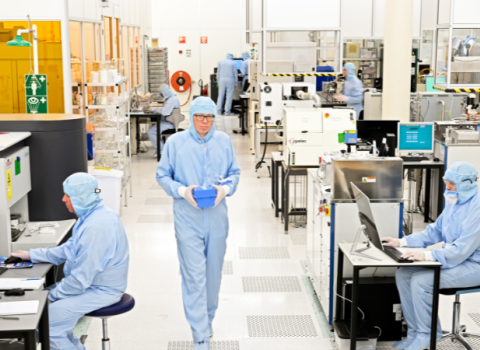International trademark activity recovered in 2010 with the World International Property Organisation receiving 39,687 applications representing a 12.8 per cent annual increase. The largest growth was from the Republic of Korea, up 42.2 per cent, China, up 42 per cent, Italy 38.7 per cent, the US 29.6 per cent, the European Union, 26.9 per cent and Japan 20.2 per cent.
“International trademark activity has rebounded and has nearly recovered the ground lost in 2009,” said WIPO Director General Francis Gurry. WIPO oversees the Madrid system under which one application can provide trademark protection in 85 countries.
The EU accounted for over half of the international applications received – some 22,403 - in 2010. Applicants in Germany ranked first, filing 5,006 international applications, representing 12.6 per cent of the total. With 137 international trademark applications, Philip Morris of Switzerland was the largest filer in 2010 followed by the Swiss pharmaceutical company Novartis, and Germany pharma Boehringer Ingelheim.
The German company Henkel, holds the largest number of international trademark registrations under the Madrid system with a total of 2,973. It is followed by Novartis, Janssen Pharmaceutica, L’Oréal , Nestlé, Unilever, Sanofi-Aventis and BASF.
The WIPO-administered Madrid System for the International Registration of Marks offers a trademark owner the possibility of having a mark protected in up to 85 countries by filing one application, in one language (English, French or Spanish), with one set of fees, in one currency (Swiss Francs). Applicants wishing to use the Madrid system must apply for trademark protection in a relevant national or regional trademark office before seeking international protection.
When submitting an international trademark application, applicants must designate those member states in which they want their mark to be protected. This can be extended to other members at a later date, allowing holders of trademarks to expand the geographical scope of the protection.
The top six in the ranking of most designated member states changed in 2010. China, with 16,143 designations, continues to be the most designated country, but the European Union moved up three places to become 2nd , followed by the US, Russian Federation, Switzerland and Japan.
A number of countries moved up the list of 40 most designated contracting parties. For example, the Republic of Korea moved from 10th to 8th position, Egypt from 39th to 21st position, Morocco from 27th to 22nd position, Bosnia and Herzegovina from 26th to 23rd position, Kazakhstan from 29th to 26th position, Republic of Moldova from 30th to 28th position and the Islamic Republic of Iran from 37th to 33th position.
The most popular classes of goods and services in international trademark registrations recorded in 2010 were Class 9, covering computer hardware and software, representing 8.5 per cent of the total.
Simplification of design protection boosts applications
At the same time WIPO said that simpler rules that came into force at the beginning of 2010 sparked notable growth in applications to register designs under the Hague system, which offers a means of obtaining protection for an industrial design in the 57 countries that belong to the scheme by filing a single application.
International design activity saw strong growth in 2010 with 2,382 applications, a 32.6 per cent increase over the previous year. Each registration can protect a number of individual designs.
“Designs are a valuable means of product differentiation, often determining the success of one product over a comparable one,” said WIPO Director General Francis Gurry. Many companies invest large sums of money and expertise to develop winning designs, “The significant growth in filings under the Hague system shows that, in spite of difficult economic times, companies continue to invest in protecting industrial design,” Gurry added.





 A unique international forum for public research organisations and companies to connect their external engagement with strategic interests around their R&D system.
A unique international forum for public research organisations and companies to connect their external engagement with strategic interests around their R&D system.